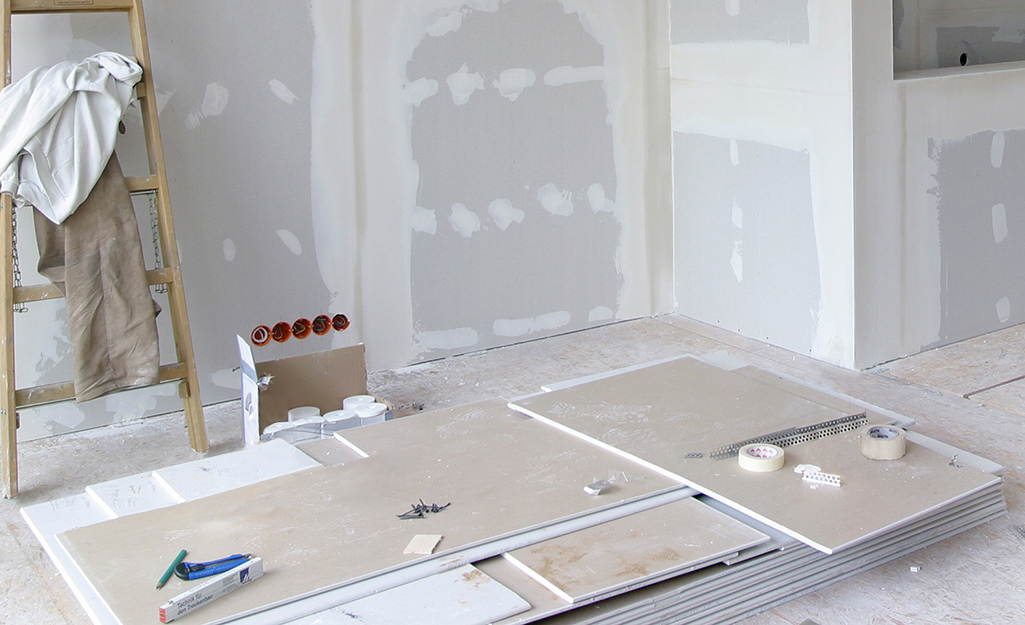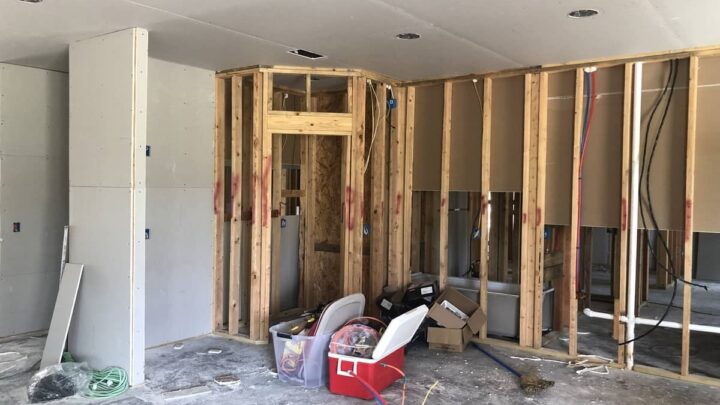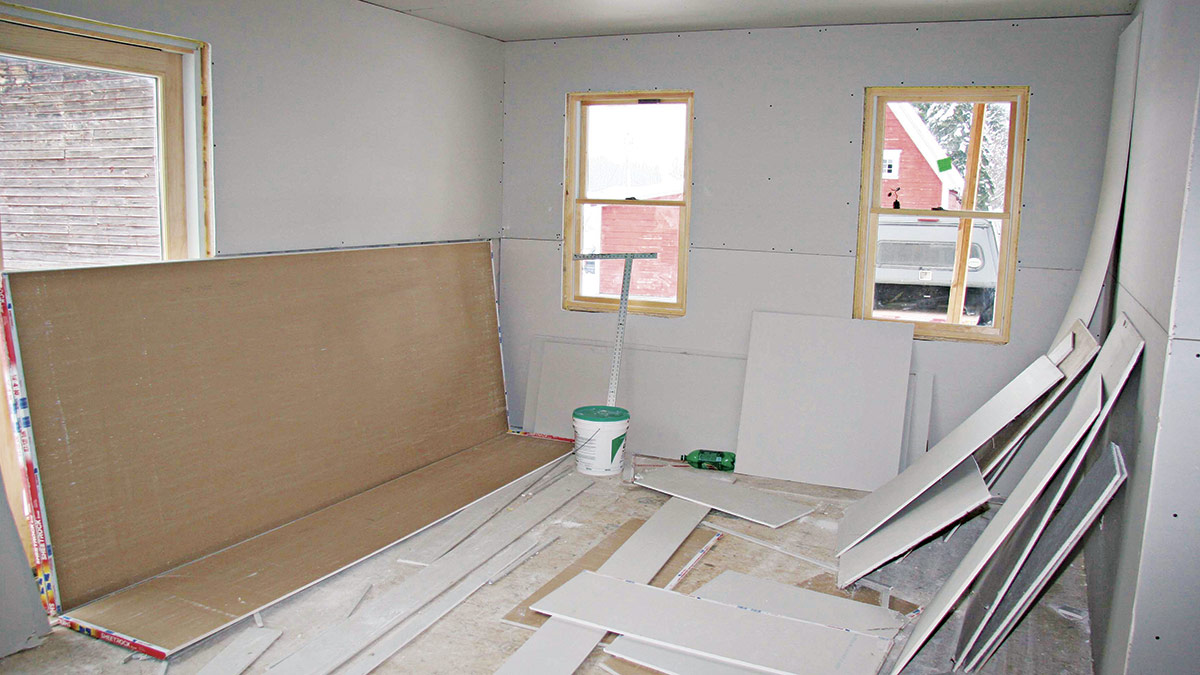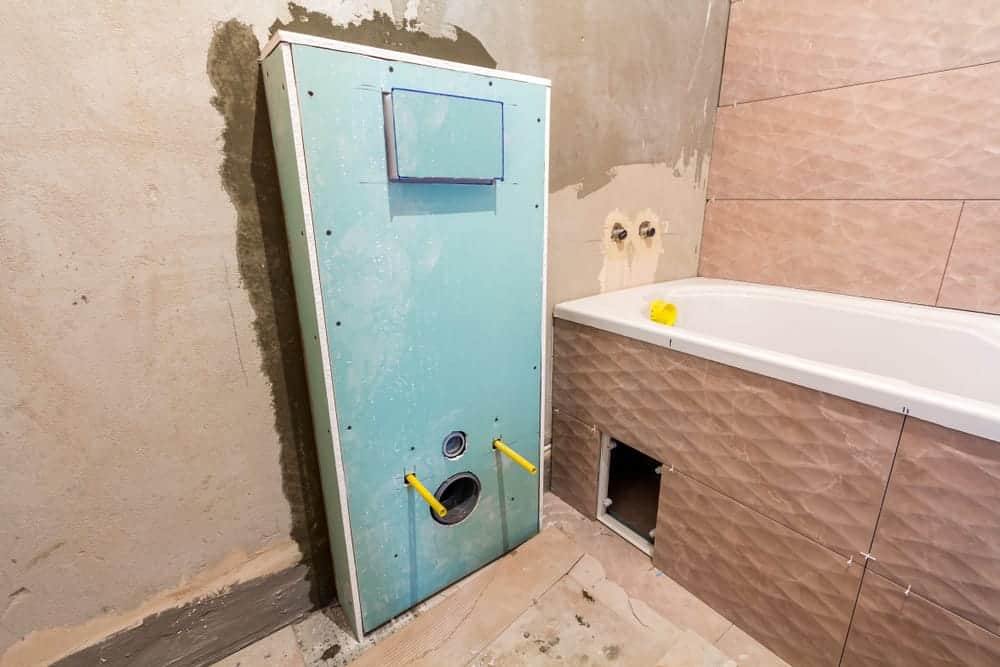
Things to Consider When Choosing the Best Drywall for Bathroom Walls
There are a few things to keep in mind when choosing the best drywall for your bathroom. Here are some key considerations:
Image Source: homedepot.com
1. Moisture and Mold Resistance
As mentioned earlier, bathrooms are prone to moisture and high humidity. Therefore, we recommend looking for moisture- and mold-resistant drywall to withstand these conditions.
However, it’s important to note that although choosing mold-resistant drywall can help limit mold growth, it does not guarantee full mold prevention. Moisture management, proper ventilation, and regular cleaning and maintenance are still required to reduce the bathroom’s mold risk.
2. Waterproof Properties
Keep in mind that even moisture-resistant drywall can lack waterproof properties. Consider looking for drywall that is moisture-resistant and has waterproof properties. Alternatively, you can consider additional waterproofing measures such as using a vapor barrier, installing tile in wet areas, or applying waterproof paint, especially in the shower or bathtub areas.
3. Durability
When shopping for the best drywall for the bathroom, consider its durability. Installing drywall in high-traffic areas like the bathroom will subject it to various sources of potential damage, such as humidity, moisture, impact, and wear and tear. Therefore, opt for drywall that will still last longer even after exposure to such conditions.
4. Installation and Maintenance
Consider the ease of installation and maintenance of the drywall. Some types of drywall are easier to install than other options, such as cement board, which requires more specialized installation techniques.
Image Source: homeefficiencyguide.com
Keep in mind that although installing drywall can be a DIY project, hiring a professional contractor is recommended, especially if you don’t have experience or are unsure of the process.
5. Local Building Codes
Before buying the best drywall for your bathroom, enlighten yourself with the local building codes and regulations for installing drywall. Some areas usually have specific requirements for moisture or waterproofing.
Local authorities or municipalities set these local building codes and regulations to ensure construction projects’ structural integrity, safety, and compliance within their jurisdiction. Therefore, when installing drywall in your bathroom, follow these codes to ensure a safe and compliant installation.
6. Compatibility with Finishes
When choosing the best drywall for your bathroom, it’s critical to consider the compatibility of the drywall with the desired finishes, such as paint, wallpaper, or tile. Ensure that the drywall surface is suitable for adhesion or application of the desired finish.
Steps on How to Install Drywall in a Bathroom
Image Source: rosaleneov.life
1. Prepare the Space
Ensure the bathroom is clean and debris-free and the framing is ready. Remove any old drywall or wall coverings if necessary.
2. Measure and Cut Drywall
Take accurate measurements of the bathroom’s walls and ceilings, where the drywall will be installed. Cut the drywall to size using a drywall saw or utility knife. Also, cut the openings for plumbing fixtures, electrical outlets, and switches. We recommend measuring the distance to all four sides for circular cuts and using a compass to outline a precise circle before cutting.
3. Install the Drywall
If applicable, install the ceiling drywall first. Have someone help you hold the drywall sheets in place while you use drywall screws to attach them to the walls. Leave a small space between the sheets (about 1/8 inch) to allow expansion. Keep working on the walls, starting at one end and moving across. Cut the drywall to fit around any openings or other obstacles.
4. Tape and Mud the Seams
Spread drywall joint tape over the seams between the drywall sheets, and then use a taping knife to spread a thin coating of joint compound (mud) over the tape. To obtain a smooth finish, smooth off the mud, feather the edges, and allow it to dry thoroughly.
5. Sand and Repeat
Image Source: sunrisespecialty.com
After the initial layer of mud has dried, softly sand it to create a smooth surface. Apply several layers of joint compound, feathering each layer wider than before. Sand the surface between applications until it is even and smooth.
6. Finish and Texture
Depending on the desired look, you can apply texture to the drywall with a stipple brush, a trowel, or a texturing spray. Another option is to use extra coats of joint compound and sand between each layer for a smooth finish.
7. Prime and Paint
After the last application of the joint compound has dried and been sanded, prime and paint the drywall to prevent water damage. After the drywall primer has dried, you can paint the walls with bathroom-safe paint.
Frequently Asked Questions on the Best Drywall for Bathroom Walls
1. What Type of Drywall is Suitable for a Bathroom Shower?
We recommend installing cement board drywall in tile-covered wet applications such as bathtubs and showers.
2. What is the Best Wall Thickness in the Bathroom?
For residential construction, 1/2-inch-thick drywall is enough for the whole bathroom. The only exception is installing a green or concrete board around bathtubs and showers. The only place that thicker drywall is needed is in garage ceilings.
3. What Are the 6 Different Types of Drywall?
- Regular drywall (also known as White Board) is the most popular type used on walls and ceilings in home and commercial projects.
- Green board (also known as mold-resistant drywall) usually has a thicker paper backing than regular drywall and is wax-coated for improved moisture resistance.
- A Cement Board is made of cementitious materials mixed with reinforcing fibers, making a solid and stable pane. It’s incredibly long-lasting and moisture-resistant, ideal for humid areas like bathrooms and showers.
- Blue Board (also known as plasterboard) is mostly used as a base for plaster applications, similar to lath in lath and plaster walls.
- Soundproof drywall: Although all drywalls have some soundproofing properties, soundproof drywall adds extra wood fiber, polymers, and gypsum to enhance the sound transmission class (STC) over that of white drywall.
- Specialized fire-resistant drywall is commonly used in garages and basements around potentially explosive equipment.
4. Can You Tile Over Drywall?
In most home rooms, you can apply tile to drywall without any trouble so long as you start by adequately preparing the drywall and ensuring you have the right mortar for the project. It is reliable and safe, and it is what most contractors use.









